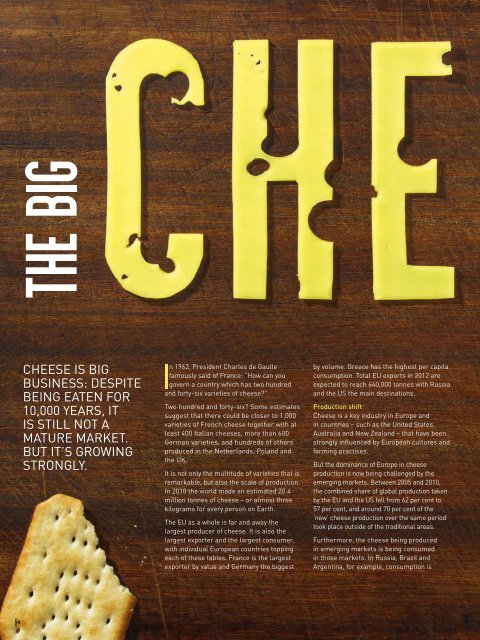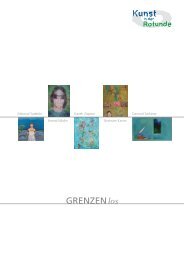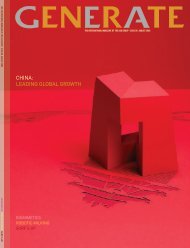A BREATH OF FRESH AIR SAY CHEESE WAR ON ... - GEA Group
A BREATH OF FRESH AIR SAY CHEESE WAR ON ... - GEA Group
A BREATH OF FRESH AIR SAY CHEESE WAR ON ... - GEA Group
You also want an ePaper? Increase the reach of your titles
YUMPU automatically turns print PDFs into web optimized ePapers that Google loves.
4<br />
<strong>CHEESE</strong> IS BIG<br />
BUSINESS: DESPITE<br />
BEING EATEN FOR<br />
10,000 YEARS, IT<br />
IS STILL NOT A<br />
mATURE mARkET.<br />
BUT IT’S GROWING<br />
STR<strong>ON</strong>GLY.<br />
n 1962, President Charles de Gaulle<br />
famously said of France: “How can you<br />
govern a country which has two hundred<br />
and forty-six varieties of cheese?”<br />
Two hundred and forty-six? Some estimates<br />
suggest that there could be closer to 1,000<br />
varieties of French cheese together with at<br />
least 400 Italian cheeses, more than 600<br />
German varieties, and hundreds of others<br />
produced in the Netherlands, Poland and<br />
the Uk.<br />
It is not only the multitude of varieties that is<br />
remarkable, but also the scale of production.<br />
In 2010 the world made an estimated 20.4<br />
million tonnes of cheese – or almost three<br />
kilograms for every person on Earth.<br />
The EU as a whole is far and away the<br />
largest producer of cheese. It is also the<br />
largest exporter and the largest consumer,<br />
with individual European countries topping<br />
each of these tables. France is the largest<br />
exporter by value and Germany the biggest<br />
by volume. Greece has the highest per capita<br />
consumption. Total EU exports in 2012 are<br />
expected to reach 640,000 tonnes with Russia<br />
and the US the main destinations.<br />
Production shift<br />
Cheese is a key industry in Europe and<br />
in countries – such as the United States,<br />
Australia and New Zealand – that have been<br />
strongly influenced by European cultures and<br />
farming practises.<br />
But the dominance of Europe in cheese<br />
production is now being challenged by the<br />
emerging markets. Between 2005 and 2010,<br />
the combined share of global production taken<br />
by the EU and the US fell from 62 per cent to<br />
57 per cent, and around 70 per cent of the<br />
‘new’ cheese production over the same period<br />
took place outside of the traditional areas.<br />
Furthermore, the cheese being produced<br />
in emerging markets is being consumed<br />
in those markets. In Russia, Brazil and<br />
Argentina, for example, consumption is

















